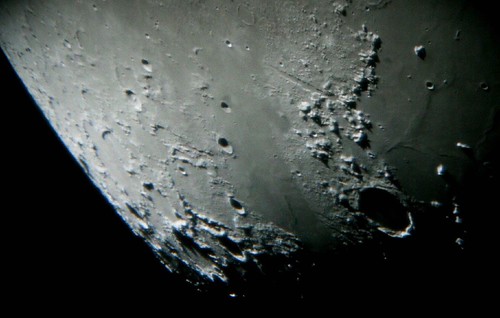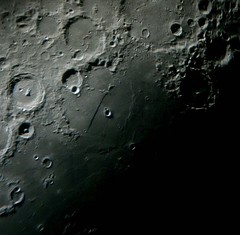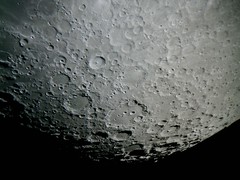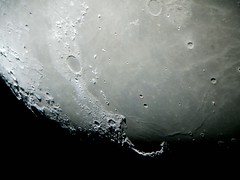After three weeks without having a chance to use the scope due to cloud and the waxing moon threatening to spoil the last chance of a tour of the winter sky, last night was clear and offered a perfect chance of a tour the best the night sky has to offer.
I started off with M42, always magnificent and showing structure in the nebulous whisps around the trapezium. M43 was visible and even a hint of NGC1977 (Running Man Nebula). Then it was off to Sigma Orionis the wonderful multiple system. I tried to see the nearby Horsehead Nebula but it was too faint for the light pollution present. A half hearted attempt to find M78, which I have observed before, proved fruitless.
M41 in Canis Major was easy to find. A fine open cluster with a bright red star near the centre. Then I tried Mira (omicron Ceti) which I found starhopping from Menkar. On the way I observed the M77 Seyfert galaxy near Delta Ceti.
Next stop was the M1 (Crab Nebula) easily found near Zeta Tauri. This is very faint but is an obvious bright nebular patch. I then went over to Triangulum and the elusive Triangulum Galaxy M33. This object was found but is so faint that if I didn't know its position I would never have seen it. In my viewing conditions it is a very slightly brighter patch of sky. Once you know its there it is obvious. To make up I went over to the very easy M31, M32 galaxies in Andromeda, always very easy to find.
However all this was done whilst waiting for the main event. Saturn had risen to an appreciable height, some 32 degrees. It was magnificent. I tried a magnification of x240. Very evident were the cloud bands, especially one in the Southern hemisphere and the Cassini Division. It is ineresting to note how much the rings have closed up since my last observation earlier this year. The moons were also visible especially Titan to the West but also Tethys (between Titan and Saturn), Dione (on the opposite side) and Rhea to the South of the planet. Nearby I observed the interesting Algieba (Gamma Leonis), a fine orange double, very easy to resolve.
Altogether a very satisfying night's viewing.





